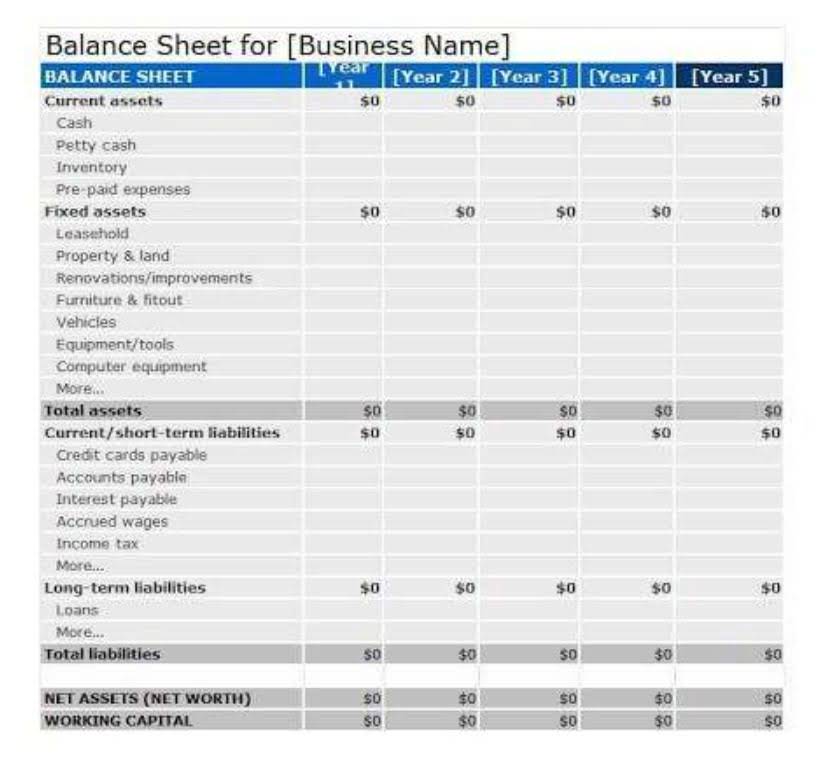
Compare the cash flow statements of the company with its competitors or industry benchmarks to assess its relative position and performance. For example, if the company has a higher operating cash flow margin than its peers, it means that it is more effective in converting its horizontal analysis formula sales into cash. For instance, a vertical analysis of an income statement might reveal that a company is spending a higher percentage of its revenue on marketing expenses compared to its competitors.

Horizontal Analysis of the Income Statement
Smith’s 2021 study revealed that companies employing both techniques reduced financial discrepancies by over 30% compared to relying on just one. This article provides an in-depth overview of horizontal and vertical analysis, explaining the key differences, formulas, and benefits of each technique. Horizontal analysis is your go-to method for comparing financial data across multiple periods. It’s like having a time machine for your finances, where you can spot trends, identify anomalies, and essentially read between the lines of those monotonous columns of numbers. Understanding the concept of horizontal analysis is critical; it aids in bookkeeping for cleaning business analyzing the trend in each line-item year over year (YoY). Any distinct deviation in pattern might be a sign of some inconsistency in detailing that requires prompt examination.
Common Mistakes and How to Avoid Them
There are other tools and platforms designed to streamline this process even further. Using these functions, adjusting entries you can turn your static spreadsheet into a dynamic tool that provides real-time insights. For example, you might see high positive changes in green and negative changes in red. This visual cue can be incredibly helpful when you’re scanning through lots of data. If you’re looking for a comprehensive guide to horizontal analysis, you’ve come to the right place. This blog post will discuss what horizontal analysis is, why it’s important, and how to perform it correctly.

Analyzing Income Statements
Every single item is compared with its counterpart in the alternative income statement. From a general view, it could be seen that the company made considerable growth in its income between the years. The percentage representation makes it easier to determine the level of change between these different periods. To start with, the statements over which comparison is intended to be made need to be in existence and available. The more popular financial statements over which Horizontal Analysis is executed are the income statement and balance sheet. Using horizontal analysis in monthly or quarterly reviews helps businesses track performance trends and spot potential issues.
Vertical analysis expresses each line item on a company’s financial statements as a percentage of a base figure, whereas horizontal analysis is more about measuring the percentage change over a specified period. Horizontal Analysis measures a company’s operating performance by comparing its reported financial statements, i.e. the income statement and balance sheet, to the financial results filed in a base period. Although a change in accounting rules or the occurrence of a one-time event can have an impact on horizontal analysis, these events should be reported in the financial statements’ footnotes to ensure consistency.

What is horizontal analysis in financial accounting?

Let’s perform a horizontal analysis of Facebook’s income statement items to understand the concept. Analysts must perform horizontal analysis of all major financial statements as key financial metrics are closely linked for all of them. Horizontal or trend analysis is the historic review of the financial statements of a company for a specified period. Mastering these advanced techniques and tools can significantly enhance your ability to extract meaningful insights from financial data and make informed decisions based on your horizontal analysis findings. Rolling averages and smoothing techniques are valuable tools for reducing noise and identifying long-term trends in financial data.

- Fortunately, tools like Google Sheets or Excel allow you to set up templates, so you can forget about the calculations and focus on analysis.
- However, the company also faced some challenges, such as lower gross profit margin, higher cost of goods sold, and higher income tax.
- The selling and marketing expenses increased by 7.4% from Rs 43,438 million in 2023 to Rs 46,648 million in 2024.
- In this method, the earliest period is set as the base period and each subsequent period is compared to the base period.
- The final step in horizontal analysis is interpreting the results of your analysis.
- Martin loves entrepreneurship and has helped dozens of entrepreneurs by validating the business idea, finding scalable customer acquisition channels, and building a data-driven organization.
Horizontal analysis, on the other hand, compares financial data across multiple periods to analyze trends, changes, and growth rates. It focuses on identifying patterns and variations in performance over time. Horizontal analysis is important for investors and creditors because it provides insights into the financial health and performance trends of a company over time. By evaluating percentage changes in key account balances, such as net sales, cost of goods sold, and gross profit, stakeholders can identify growth patterns, efficiency improvements, or potential financial issues.
- The beginning stockholders’ equity balance in the current year is taken from the ending stockholders’ equity balance in the prior year.
- In this GKSR example above, we can identify the YoY growth rate using a horizontal income statement analysis.
- Real-time bookkeeping revolutionizes financial management by providing businesses with instant access to up-to-date financial data, improving cash flow tracking, expense management, and profitability analysis.
- These steps provide a systematic approach to extracting valuable insights from financial data.
- Horizontal analysis is a method used to evaluate financial data over multiple periods, allowing businesses to spot trends and patterns.
- The horizontal analysis formula used to calculate the % base column is shown in the example below for the revenue line item.
- Similarly, the company’s debt-to-equity ratio, which is the ratio of total liabilities to total equity, has also remained constant at 1.5, which means that the company’s solvency position has not improved.
During his time working in investment banking, tech startups, and industry-leading companies he gained extensive knowledge in using different software tools to optimize business processes. The information needed to compute the debt-to-equity ratio for Banyan Goods in the current year can be found on the balance sheet. In this case, current assets were $200,000, and current liabilities were $100,000. Current assets were far greater than current liabilities for Banyan Goods and they would easily be able to cover short-term debt. Use horizontal analysis to track changes over time, like how your revenue or costs are growing.
- A common tip is to use audited financial statements to ensure reliability.
- This could prompt management to reevaluate their marketing strategy or cost structure to enhance profitability.
- From this, it is seen that, for instance, with vertical analysis, every item on an income statement is expressed as a percentage of the gross sales.
- The $43,000 is the operating income, representing earnings before interest and taxes.
- For example, in the balance sheet, we can assess the proportion of inventory by dividing the inventory line using total assets as the base item.
- For example, if Banyan Goods set total assets as the base amount and wanted to see what percentage of total assets were made up of cash in the current year, the following calculation would occur.
By analyzing financial statements, your company accurately spots trends over time and identifies the mix of assets and liabilities it has to deal with within a certain period. Financial analysis helps you examine relationships between different financial items and determine efficient operations to manage them. From the above examples, the horizontal analysis only pushes to present the changes in these different periods and offer companies or businesses easy pointers to the health of their financial growth and situations. However, more than two financial statements need to be compared to obtain more reliable results for proper financial analysis. Even though vertical analysis is a statement comparison within the same year, Banyan can use information from the prior year’s vertical analysis to make sure the business is operating as expected. For example, unearned revenues increased from the prior year to the current year and made up a larger portion of total liabilities and stockholders’ equity.
